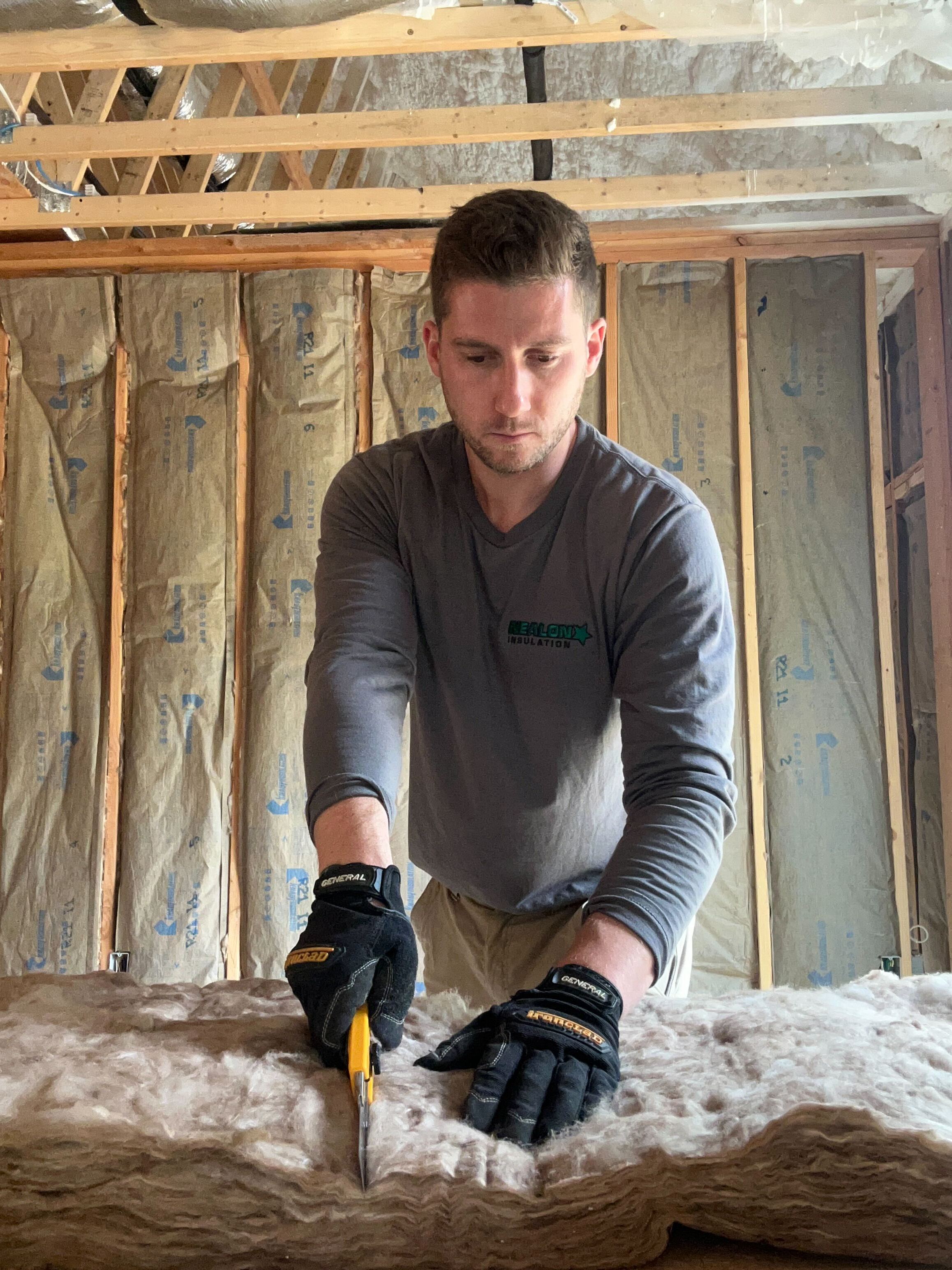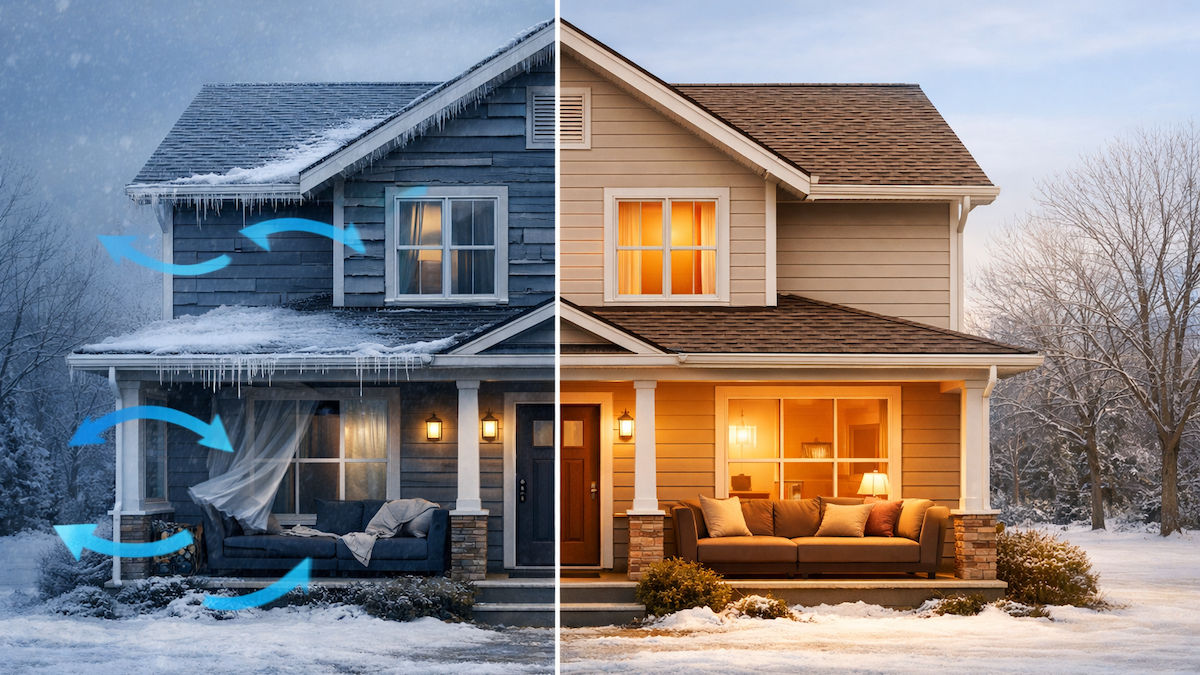What To Do If Your Insulation Gets Wet

Let’s get one thing out of the way real quick: water is great for a lot of things—gardens, coffee, post-game showers—but it’s not great for insulation.
Wet insulation is like a soggy sandwich: unappetizing, ineffective, and a potential breeding ground for nasty stuff you don’t want in your walls.
So what do you do if your insulation gets wet?
First, don’t panic. This happens more often than you’d think—burst pipes, roof leaks, basement flooding, a freak Nor’easter blowing sideways rain into your attic vents—you name it, we’ve seen it. And trust me, there’s a right way to handle it depending on the type of insulation in your home.
1. Spray Foam Insulation
What to know:
If you’ve got spray foam insulation—open or closed cell—you’re probably in better shape than most. Closed-cell is the superhero here: it’s highly water-resistant, mold-resistant, and acts like a shield. We’ve seen cases where water hit the foam and was actually diverted away from the cavity, like it hit a raincoat.
But—and this is important—just because spray foam doesn’t absorb water doesn’t mean your studs and sheathing don’t. If water gets trapped behind foam with nowhere to go, you’ve still got a problem. That’s why proper ventilation and airflow matter, even with foam.
What to do:
- Inspect the area to make sure no water is pooling or trapped behind the foam.
- If it’s closed-cell and the structure is sound, you’re likely good to go.
- Open-cell is a bit more breathable and can retain moisture—if it’s been saturated for a while, it may need to come out.
Mike’s take:
If I had a nickel for every time closed-cell spray foam saved someone from a full-gut remediation job, I’d have at least enough for a steak dinner and a bottle of decent red. But don’t get cocky—foam still needs airflow to let framing dry if something does go wrong.
2. Cellulose Insulation
What to know:
Cellulose is made from recycled paper and treated with fire- and mold-resistant chemicals. That gets it a long way—but yeah, it’s still paper. And paper does soak up water.
Here’s the kicker though: when properly vented and installed, cellulose can wick moisture and dry out. It’s breathable. That’s one of the key reasons we like it—it manages moisture instead of trapping it. But that only works when the moisture is minor and the conditions are right.
What to do:
- If cellulose is fully saturated, especially in a wall or ceiling cavity, it usually needs to be removed.
- Small damp spots might be salvageable if caught early and thoroughly dried—but don’t roll the dice unless you know airflow is solid and drying is happening fast.
Mike’s take:
We once opened up a wall in a coastal home where the vent flashing failed. The cellulose was soaked—mashed potatoes. Smelled like low tide in August. We vacuumed it out, dried the cavity with fans, reinsulated properly, and the homeowner went from worried sick to sleeping like a baby.
Moral of the story? Cellulose is great—but it can’t work miracles if it’s left to stew.
3. Fiberglass Insulation
What to know:
Fiberglass doesn’t absorb water like cellulose does—but it holds onto it like a wet sponge. And while the glass itself won’t mold, the paper backing and surrounding wood sure will. If fiberglass gets wet and sits too long, it basically becomes useless. No R-value, no comfort, and a potential mold farm.
What to do:
- If fiberglass batts are soaked, remove them—especially if they’ve been wet for more than 48 hours.
- If it’s loose-fill fiberglass and just mildly damp (like a light attic leak), you might be able to dry and fluff it—but be 100% sure there’s no hidden moisture or mold risk.
Mike’s take:
Had a job in Guilford where a raccoon popped off a roof vent and a storm soaked the attic. By the time the homeowner noticed, we were replacing not just the insulation but the roof decking and half the attic structure.
Lesson: Moisture waits for no one. Catch it fast, fix it faster.
The Bottom Line
If your insulation gets wet:
- Act quickly – Time is the enemy.
- Inspect thoroughly – Don’t assume “just a little damp” means it’s fine.
- Replace when in doubt – Especially cellulose and fiberglass.
- Fix the root cause – Insulation isn’t a water detector. It’s supposed to keep you warm, not soak up storms.
And if you’re not sure what you’re dealing with—give us a shout. We’ll take a look, tell you the truth (no fluff), and help get your home sealed up the right way.
👉 Contact Nealon Insulation. We’ve been keeping Connecticut homes dry, tight, and comfortable since 1977. Let’s keep yours that way, too.
Related Articles
Let's Work Together
Ready to transform your home into an energy-efficient haven? Schedule your free energy assessment today and experience the Nealon difference for yourself.



